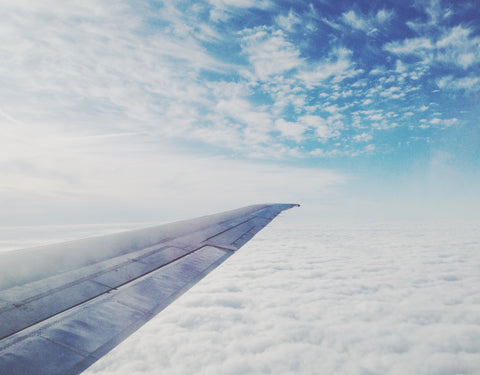Bermuda
Turbulence, not the ordinary jostle, but feats of gravity stomach flips. I quickly pull open the window cover, snow-white clouds blanket the earth, then, such a downward surge that the whole of the plane's passengers cried sharply in unison, "EWW!" Most definitely each and every one of us cried the same haunting sound. Ladies and gentleman, please fasten your seat belts, we are now entering the Bermuda Triangle.

The triangle is Bermuda's best-known feature. Before departure, Cody remarked, "I hope we get lost on the way back and not on the way there." Right.
Bermuda is not the Bahamas or in the Caribbean, but more precisely it is an island chain located 1000 miles due north in the Atlantic Ocean. Often referred to as one island, Bermuda is actually an archipelago comprised of 181 islands connected by bridges, ferries or personal watercraft. The teal and turquoise water surrounding the shallow islands is crisp and inviting.
Beware of the shallow reefs that extend for up to 16 miles from the interior islands as this is the cause of so many ships lost at sea. Bermuda has the most shipwrecks in shallow water than anywhere else in the world. According to the Dockyard Times, 350 wrecks from 10 to 500 years old are scattered around the island in less than 60 feet of water. The surrounding ocean is a diver and archeological paradise. Also known as shipwreck island or the "isle of the devils" to the early explorers.
The Spanish and Portuguese sailors were first to arrive in the 1500s as a stopover to the New World. The treacherous reef, violent storms and strange howls from local birds thwarted early colonization. However, the early explorers threw wild hogs overboard in the shallows to populate the island for desperately needed provisions during long voyages. In 1609 an English fleet of 7 supply ships set sail for the new colony of Jamestown, Virginia. The fleet separated due to a violent hurricane. After 3 days, The Sea Venture lost and taking on water, drove into the shallows less than a mile from the east end, now known as St. Georges named after the Admiral, Sir George Somers. All the passengers and crew safely escaped to shore, however they remained castaways on a deserted island.
Over the next year, they stripped the Sea Venture of its rigging, timbers and food supplies. The island was stocked with vegetation, wild hogs, fish and fowl. But most importantly the island grew a native variety of tree, Bermuda cedarwood, Juniperus bermudiana. The cedar trees provided timber to build shelters and 2 new ships, the Deliverance, and Patience. In 1610 all but 3 men left for Jamestown bringing much-needed supplies gathered from the islands to the starving colonist in Virginia.
Bermuda Cedar, Juniperus bermudiana
Quite an amazing feat to build 2 ships in under a year, out of salvaged materials and felled cedar while stranded on an island in 1609. The above is a replica of Deliverance, which brought much-needed supplies to the new colony of Jamestown, Virginia.
In 1612, England returned to the islands with the first official settlers and to claim Bermuda for the crown. The earliest structure built is now the oldest church in the New World and originally constructed with Bermuda cedar but now retrofitted with stone.
St. Peter's Church- The Oldest Church in the New World
Over the next few centuries, the island became a British New World outpost and developed the royal dockyard, forts, and defense walls against the seafaring explorers and pirates. Today Bermuda is one of the last remaining British overseas territories. Although the island is self-governing, the Queen remains the titular head of state.
The Royal Navy Dockyard from sea
The Commissioners House & The National Museum
The Colorful Capital, Hamilton, Bermuda
As an Island, there is much to do for beach recreation and sea diversions, but the history and centuries-old buildings are a fascinating wonder and worth the perils of the Bermuda Triangle.











Leave a comment
Please note, comments must be approved before they are published